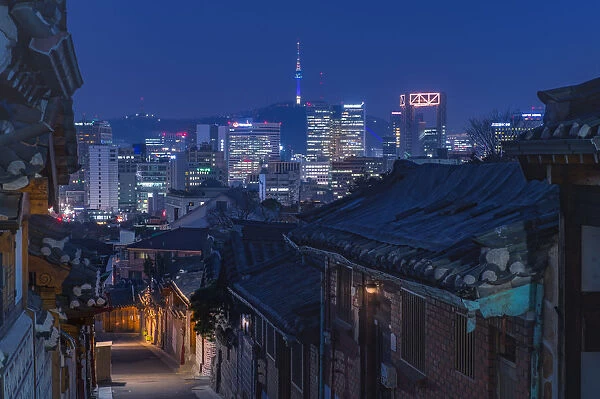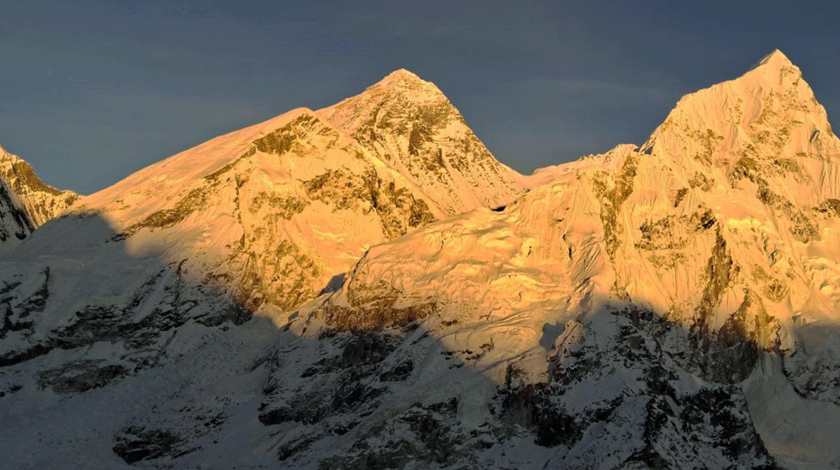







Asia, the largest and most diverse continent on Earth, is a dynamic blend of ancient history, cultural treasures, spiritual depth, and awe-inspiring natural beauty. Its varied landscapes range from the high peaks of the Himalayas to tropical rainforests, vast deserts, and island archipelagos. Equally diverse are the languages, religions, traditions, and cuisines that breathe life into this vibrant continent. For travelers, Asia offers an unparalleled spectrum of experiences—from meditating in a centuries-old temple in Bhutan to tasting fiery street food in Bangkok, or cruising the backwaters of Kerala to skiing in Japan’s northern regions. This blog explores the top destinations in Asia, diving deep into the cultural, natural, and experiential wealth each location provides. Whether you’re a solo adventurer, a family vacationer, or a digital nomad, Asia promises to leave an indelible mark on your journey.

Vietnam is a land of striking contrasts and captivating beauty. Stretching from the Chinese border in the north to the Mekong Delta in the south, the country is home to dramatic landscapes, dynamic cities, and a history that spans centuries. Northern Vietnam, especially the region around Hanoi, offers an authentic introduction to the country’s rich cultural heritage. Hanoi’s Old Quarter is a labyrinth of narrow streets filled with French colonial architecture, Buddhist temples, and bustling markets.
A few hours from Hanoi lies Ha Long Bay—a surreal seascape of limestone karsts rising from emerald waters. Cruising through the bay on a traditional junk boat, visiting floating fishing villages, and kayaking through secluded lagoons offer unforgettable experiences. Central Vietnam is home to the ancient town of Hoi An, the imperial city of Hue, and the modern hub of Da Nang. Meanwhile, southern Vietnam is defined by the energy of Ho Chi Minh City, colonial architecture, and the Cu Chi Tunnels.
Vietnamese cuisine, with iconic dishes like pho, banh mi, and spring rolls, is a gastronomic adventure. Whether you’re exploring the misty mountains of Sapa or lounging on Phu Quoc’s beaches, Vietnam captivates with its mix of culture, nature, and warm hospitality.

Japan is a country where ancient shrines and ultramodern cities coexist in harmony. Tokyo, its capital, is a high-octane metropolis filled with futuristic architecture, high-speed trains, and tech innovation. Yet it also offers tranquil gardens, centuries-old temples, and sumo wrestling traditions.
Kyoto, once Japan’s imperial capital, is the heart of traditional Japanese culture. Here, geishas walk cobbled streets lined with wooden teahouses, and Zen gardens surround historic temples. In contrast, Osaka is a vibrant food haven famous for takoyaki and okonomiyaki.
Nature lovers will find serenity in the Japanese Alps, hot springs in Hakone, and world-class skiing in Hokkaido. The cherry blossom season in spring and maple foliage in autumn offer some of the most picturesque landscapes in the world. Japan’s impeccable infrastructure, safety, and hospitality make it an ideal destination for travelers seeking both adventure and reflection.

Thailand is often the first stop for many exploring Asia, and for good reason. Bangkok buzzes with life—ornate temples like Wat Arun and Wat Phra Kaew contrast with gleaming skyscrapers, floating markets, and spicy street food stalls.
To the north lies Chiang Mai, a cultural hub surrounded by mountains and dotted with sacred temples. The Yi Peng Lantern Festival here is a magical spectacle. The islands of Thailand, from Phuket to Koh Samui to Krabi, are paradise for beach lovers and divers alike.
Thailand’s cuisine is world-renowned for its balance of sweet, sour, spicy, and salty. Dishes like pad thai, green curry, and mango sticky rice are just the beginning of a culinary journey. Whether you’re backpacking through jungles, meditating in a monastery, or enjoying a beachside massage, Thailand’s charm is both healing and exhilarating.

India is not just a country—it’s a world in itself. With its staggering diversity of languages, religions, and landscapes, it offers experiences that are deeply immersive and transformative. The north boasts the snow-capped Himalayas, the deserts of Rajasthan, and iconic landmarks like the Taj Mahal.
In the south, Kerala offers tranquil backwaters, Ayurveda retreats, and lush spice plantations. Tamil Nadu is known for its temple architecture, while Goa mixes Portuguese colonial charm with vibrant beach life. Mumbai is India’s financial capital and home to Bollywood, while Delhi seamlessly blends history with modernity.
India’s cuisine varies drastically by region—from butter chicken in Punjab to dosas in the south and sweets like rasgulla in the east. Spirituality is deeply embedded in daily life, whether through yoga in Rishikesh or evening aarti on the Ganges in Varanasi. India is chaotic, colorful, and utterly unforgettable.

Indonesia, made up of over 17,000 islands, is a mosaic of cultures, languages, and ecosystems. Bali is its crown jewel—a haven for surfers, yogis, and luxury seekers. With terraced rice fields, cliffside temples like Uluwatu, and beach clubs overlooking the Indian Ocean, Bali offers something for every traveler.
Java is home to the bustling capital, Jakarta, and cultural heartlands like Yogyakarta, near the ancient temples of Borobudur and Prambanan. Sumatra and Kalimantan offer untamed jungles, while the islands of Flores and Komodo bring you face-to-face with the world’s largest lizard—the Komodo dragon.
Indonesia’s underwater world is just as captivating, with Raja Ampat and the Gili Islands providing some of the best diving spots on the planet. The warmth of its people, diversity of traditions, and sheer natural beauty make Indonesia a destination that keeps calling you back.

South Korea is a dynamic blend of tradition and trend. Seoul, its capital, is a powerhouse of pop culture, fashion, and technology. Visit Gyeongbokgung Palace to glimpse Korea’s royal past or explore the bustling streets of Myeongdong for beauty products and street snacks.
Beyond Seoul, Busan offers beaches and seafood markets, while Jeju Island is a volcanic paradise of waterfalls and scenic trails. South Korea’s high-speed trains make exploring easy and efficient. Its cuisine, from bibimbap to Korean BBQ and kimchi, is a flavor-packed adventure.
Cultural experiences like wearing hanbok (traditional clothing), visiting Buddhist temples, and enjoying K-dramas and K-pop give South Korea a unique global influence. It’s where age-old customs meet cutting-edge creativity.
 Malaysia is a nation defined by its diversity in culture, geography, and cuisine. It consists of two main regions: Peninsular Malaysia and Malaysian Borneo, each offering unique experiences. Kuala Lumpur, the capital, is a cosmopolitan city renowned for its iconic Petronas Twin Towers, bustling markets like Petaling Street, and upscale malls such as Pavilion and Suria KLCC. It is a melting pot of Malay, Chinese, and Indian cultures, reflected vividly in the city’s food scene and festivals.
Malaysia is a nation defined by its diversity in culture, geography, and cuisine. It consists of two main regions: Peninsular Malaysia and Malaysian Borneo, each offering unique experiences. Kuala Lumpur, the capital, is a cosmopolitan city renowned for its iconic Petronas Twin Towers, bustling markets like Petaling Street, and upscale malls such as Pavilion and Suria KLCC. It is a melting pot of Malay, Chinese, and Indian cultures, reflected vividly in the city’s food scene and festivals.
Langkawi and the Perhentian Islands offer pristine beaches and world-class snorkeling and diving. For those who prefer cooler climates and scenic views, the Cameron Highlands provide tea plantations, strawberry farms, and hiking trails. On Borneo’s side, Sabah and Sarawak are rich in biodiversity, home to rare wildlife like orangutans and the Rafflesia flower. Kinabalu National Park in Sabah is a UNESCO World Heritage Site and a favorite for trekkers aiming to conquer Mount Kinabalu.
Malaysia is also known for its street food. Dishes like nasi lemak, satay, laksa, and char kway teow are beloved by both locals and travelers. The variety of flavors is a reflection of the country’s multicultural identity. Malaysia also celebrates numerous festivals suchas Hari Raya, Chinese New Year, and Deepavali, offering travelers a chance to partake in vibrant traditions.

Nestled in the heart of the Himalayas, Nepal is a paradise for trekkers, spiritual seekers, and cultural explorers. Home to eight of the world’s ten highest peaks, including Mount Everest, Nepal’s natural beauty is awe-inspiring. Kathmandu, the capital, is rich with temples, palaces, and courtyards that date back centuries. The Durbar Squares in Kathmandu, Patan, and Bhaktapur showcase traditional Newari architecture and are UNESCO World Heritage Sites.
The country is a major destination for adventure tourism. Treks to Everest Base Camp, the Annapurna Circuit, and the Langtang Valley attract thousands of travelers annually. The town of Pokhara serves as the gateway to these treks and is a destination in itself with its serene lakes, caves, and panoramic views of the Annapurna range. For those seeking spiritual growth, Lumbini, the birthplace of Buddha, offers peace and introspection.
Nepalese cuisine is simple yet flavorful, featuring staples like dal bhat (lentils with rice), momos (dumplings), and sel roti (rice flour doughnuts). Despite its rugged terrain, Nepal has developed a hospitality industry that caters well to tourists, with lodges, guesthouses, and guides available across the trekking routes. The best times to visit are spring (March–May) and autumn (September–November) when the skies are clear, and the weather is ideal for outdoor activities.
From ancient ruins and spiritual retreats to futuristic cities and tropical islands, Asia is a continent of contrasts that rewards curiosity and open hearts. Each destination offers its own blend of natural beauty, historical depth, and cultural richness. Whether you’re trekking through jungles, temple-hopping, island-hopping, or simply soaking in a hot spring, Asia invites you to experience travel in its most profound and memorable form.
So pack your bags, open your mind, and get ready to discover the boundless wonders of Asia.

Findestinations — Your trusted source for travel inspiration, destination guides, and expert tips to help you explore the world with confidence and curiosity.


6 responses to “Discovering Asia: Top Travel Destinations Across the Continent”
You’ve captured the magic of Asia so well. I especially loved the part on India—it’s chaotic but beautiful in a way that stays with you forever. Bookmarking this for future trips!
Incredible roundup! I’ve been to Japan and Vietnam, but this just reminded me how much more there is to explore. Nepal and Bhutan are now officially on my radar. Thanks for the inspiration!
I’ve always wanted to do the Annapurna Circuit in Nepal. Your description makes it sound both spiritual and challenging in the best way. Now I just need to train a bit more 😅
As someone who’s lived in Malaysia all my life, I still found this fascinating. Your section on Malaysia was spot-on, especially the part about food diversity. Makes me proud!
Fantastic guide. I appreciate how you balanced nature, food, history, and adventure. Asia really does have something for every kind of traveler. Also, shoutout to the food recs—they’re spot-on.
Great list! I’d add Sri Lanka to this too—such a beautiful, underrated destination. Beaches, history, tea plantations… but either way, this blog gave me serious wanderlust!